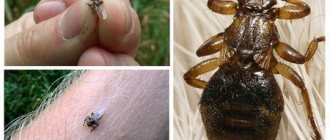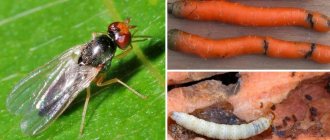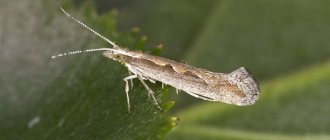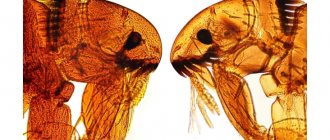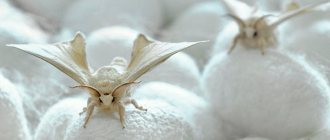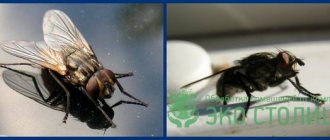From time immemorial, the cold season makes certain adjustments to living and inanimate nature. In many regions of the globe, the establishment of cold weather is accompanied by snowfall and rather low air temperatures. If for people the winter season is a completely natural, tolerable and expected phenomenon, then for many animals it is a real test of survival, requiring maximum dexterity and certain preparation from them. The animal world in winter can be called, without exaggeration, a dangerous race: only the strongest retain their positions.
Winter “strength test”
Mother Nature herself determines how and when to “test the strength” of her children. And all because winter and animals have had a complex relationship with each other since time immemorial. But time passed, eras replaced each other several times, and the evolution of the animal world dotted all the i's: many representatives of the fauna during this period adapted to survive in a harsh climate. For example, while some animals are molting, during which they shed their “summer” fur and clothing, other animals are preparing for the upcoming cold weather by stocking up on “food” and building themselves a shelter for the winter.
Dangerous situation
In winter, rodents move to areas closer to people to find food. They become more active because it becomes cold in their natural habitats and there is a lack of food. Mice gnaw on the trunk, but most often damage only the bark; the trunk does not suffer much. But sometimes they undermine the roots of a plant, especially if they settle under it. Hares cause more damage and can chew through the cambium.
Trees usually recover on their own if only part of the bark is damaged. But severe damage to the tree is not able to heal. Damage to the cortex causes several problems:
- without external protection, the tree suffers from the cold;
- open wounds can contain harmful bacteria or fungal spores;
- If the cambium is damaged, the tree's nutritional procedure is disrupted.
In any case, you should not ignore apple trees that have been damaged by rodents. If a tree trunk is damaged around its circumference, the tree becomes very sick and may even die.
Winter dream
Animal life in winter is a real struggle for survival! It’s just that everyone has their own ways of fighting. For example, badgers, bears and raccoon dogs in the summer try to accumulate as much subcutaneous fat as possible, thanks to which they can survive the harsh cold. These animals will be able to accumulate a sufficient amount of fat reserves only if the year turns out to be favorable and fruitful. Before the onset of cold weather, they prepare holes (like badgers) or dens (like bears) and retire, falling into winter sleep. By the way, these animals sleep very lightly. There were cases when hunters did not even have time to get to the bear’s den, when the animal heard them in a dream and ran away from there.
Pest control methods
The means to combat an insect such as the bark beetle depends on the place where it has settled. If the parasite has infested a tree growing outside, you need to fight it according to the following scheme:
Inspect the larvae's passages using a steel wire to check how deep the woodworm has penetrated. If the tree is too affected by it, then it is unlikely to be saved. You can still compete for a plant with shallow passages.- Remove infected branches and areas of the tree as much as possible.
- Treat the plant with a special compound. To prepare it, you need to mix 6 parts paraffin with 3 parts rosin, then heat them until boiling. 10 parts of vegetable oil are added to the mixture, after which it is boiled for another 10 minutes. It is worth adding a little fungicide to the composition, and then treating the affected trees with it.
- Collect and burn the beetles and larvae that crawl out.
- Additionally, the tree can be treated with insecticidal compounds such as Boverin, Calypsa, Bitoxibacillin or Aktara.
- All leaves, old bark, pruned branches and other debris left after pest control should be burned, as larvae may remain in them.
If a pest has infested a house or apartment, you need to treat all wooden surfaces with special preparations. Among them are “Clipper”, which acts against gnawing insects, “Senezh Insa”, which is non-toxic to humans and is effective against parasites at any stage of development, as well as “Anti-bug”, “Wood healer” or “Antishasheli”. In addition, the tree can be coated with improvised means, using grease, kerosene, diesel fuel or machine oil. Additionally, it is worth using aerosols.
If the wood infestation is insignificant, you can try introducing insecticidal preparations using a syringe. Special fumigators, checkers and electromagnetic wave emitters are also effective against this parasite.
Temperature method
Separately, it is worth mentioning the temperature method of pest control. The larvae of this beetle tolerate sub-zero temperatures well - they are not afraid of frosts even at 30 degrees, so a harsh winter is not capable of killing insects. However, pests cannot withstand high temperatures.
This can be used to eliminate them. If the affected wood product is heated to 70 degrees Celsius and maintained at this temperature for 20 minutes, the larva simply will not survive. This is due to the fact that it consists mainly of protein, which is easily destroyed under the influence of high temperatures.
This procedure is complicated only because the entire house can hardly be heated to the required level. Therefore, this method of control is best used to eliminate beetles from furniture.
Pheromone traps
Pheromone traps are also considered a good remedy against pests. The device lures beetles to one place, after which they can be easily destroyed. True, such traps have some disadvantages. First of all, pheromones are able to attract only adult individuals , and the larvae do not react to them at all.
In addition, such a device can lure not only beetles from your site, but also parasites from neighboring areas. If they are not destroyed, the situation can only get worse.
Due to such disadvantages, pheromone traps should be used carefully. If furniture or wood is affected only by larvae, then they should not be used, otherwise in the near future the number of parasites will increase significantly.
Do you want to survive the winter? Eat tree bark!
What animal do you think feeds on tree bark in winter? Of course, a herbivore! And it is not alone. Almost all herbivorous animals eat only tree bark in cold weather, since they have nothing else to eat. In the winter forests of Russia it is consumed mainly by hares. It is worth noting that their winter feeding is very monotonous: twigs and bark of young trees (and shrubs). In severe frosts, hares often leave the forest and settle in nearby gardens in search of food. That is why gardeners are recommended to trample snow next to young fruit trees, wrapping their trunks. This will protect the crop from attacks by hares.
What animal feeds on tree bark in winter, except hares? These are moose. But, unlike hares, they do not destroy gardens and vegetable gardens. They prefer to feed in coniferous and mixed forests. Basically, these animals eat the bark of aspen, birch, willow, alder, and rowan. Moose also love the thin ends of young branches, and even the shoots of coniferous trees. It is curious that they eat these shoots along with green needles. Elks tear off bark with their long teeth. Often, in severe cold weather, the bark on trees freezes severely, and animals have to work hard: they are forced to scrape it off. Sometimes this leads to soft lip injuries or tooth loss.
Reasons for appearance
Although bark beetle larvae are usually found in forested areas, sometimes these insects can infect a person's garden or even home. They end up in gardens because they are constantly in search of food, and because of this they move from one plant to another.
The reasons for bark beetle infestation of buildings can be different. So, usually when building a house, the prepared lumber must be treated with special compounds that prevent the appearance and reproduction of beetles and larvae. However, unscrupulous builders may neglect this rule or carry out poor-quality treatment, which is why the pest may begin to destroy the building by spreading to it from the garden.
Another cause of infection is the use of low-quality material. If there are already at least a few larvae in the boards or logs, it means that the bark beetle will soon reach the furniture that will be in the house.
Who else eats tree bark in winter?
In addition to hares and moose, beavers like to feast on young tree bark in winter. By the way, this is not surprising. The fact is that in general the whole life of beavers is connected with trees. From branches and bark, these rodents make themselves a kind of reserves for the winter. This happens at the bottom of certain reservoirs, since it is there that the woody “delicacy” retains its nutritional properties as much as possible until February. Beavers live in families and build so-called huts in the water - permanent dwellings. To prevent their houses from being washed away by the current, rodents strengthen the dam from time to time. If for one reason or another food supplies begin to become scarce in winter, then hungry beavers may covet their own dams. But this happens quite rarely, since these animals harvest up to 70 cubic meters of wood for one family for the winter!
Signs of tree infestation
Wood infested with insects can be detected by the appearance of small holes and fine dust resembling flour in it. To confirm the presence of a beetle, you can pierce the bark of a tree or the surface of the wood with a sharp knife next to the hole you find. If there is a feeling of emptiness, it means that the plant or lumber is definitely affected by the pest.
In addition, its presence can be recognized by its special sound. Light crackling or creaking noises are often heard from wood infested with larvae.
Although the bark beetle looks quite harmless, pest control should begin as early as possible. If this insect appears in the garden, it means that it will soon switch to wooden buildings, since these parasites multiply very quickly.
From predators to herbivores!
It is worth noting that moose, hares and beavers are not the only answer to the question: “What animal feeds on tree bark in winter?” The above-mentioned animals are, rather, leaders in eating tree bark. In addition to them, we can also remember about wild boars, which are also not averse to gnawing trees. Moreover, even some members of the canine family eat the bark. It all depends on the condition of the animal in winter. Sometimes even the most ardent predators cannot find more tolerable food for themselves than tree bark. It is known that wolves, being destroyers of wounded and sick animals, become scavengers in winter. But during a particularly unfavorable period, they turn into “herbivores”: in order to survive, they are forced to chew cones, tear frozen berries under the snow and, of course, strip the bark from trees.
Description and types of insect
Bark beetles are small dark brown or black beetles that have a characteristic bevel at the end of their body. This bevel, bordered by teeth, is necessary for the insect to remove wood waste.
Insects of this family live, feed and breed exclusively in trees. Most of them prefer coniferous species, living in spruce, fir, pine or cedar trees, however, there are also many bark beetles that like to feast on deciduous plantings.
It is noteworthy that the adult beetle does not cause much harm to trees , since the larvae pose the greatest danger to gardens and wood buildings. The female beetle gnaws small holes under the bark and then lays eggs in them.
When larvae emerge from them and have an insatiable appetite, they expand their passages, creating entire labyrinths. The larval stage of the bark beetle can last several years, so these insects are capable of causing irreparable damage.
In each of the corridors gnawed by the bark beetle, you can find an expanded chamber where the larva pupates, and after emerging from the pupa, it gnaws a hole outward and flies out of the tree.
In a year, beetles are capable of producing 1-2 generations. To be fair, it is worth mentioning that for all their destructive habits for plantings, bark beetles are considered forest orderlies. These insects often select trees that are in very poor condition and destroy them, promoting the replacement of old and diseased plants with healthy and young ones.
There are more than 3 thousand species in the subfamily of bark beetles. Of these, over 200 species are found in Russia, spending most of their lives under the bark of trees. The following varieties are considered the most common:
- Typograph - this type of woodworm has a body 5-6 mm long. Its peculiarity is considered to be light brown hairs that grow on a black body with a shiny surface. The insect prefers to live in thick-barked coniferous trees. In addition, it can grow in fresh stumps and young trees.
- The furniture grinder is a small bug with a red-brown or brown body. Its body is distinguished by an elongated shape with a convex head, which is hidden in a kind of hood. Larvae of this species most often infest homes, infecting window frames, furniture or floor coverings.
- The bark beetle is a common species of bark beetle that lives in taiga conditions. The beetle has a hairy, oblong body. Its shade can be brown, black or brown, and depends on where the parasite lives. This species can be distinguished by its mustache, which resembles a club. The pine beetle is capable of flying short distances, which is why it can quickly populate new territories.
- The large black longhorned beetle is a large pest with a body up to 3.5 cm in length, painted black with a greenish tint. As the name suggests, the beetle has long antennae that are more than twice the size of its body. A clearly visible white fluff grows on the tips of the woodworm's elytra. This species feeds on oak or coniferous trees, preferring young shoots or fallen trees.
- Sapwood - has an oblong body, beveled at the back. Prefers elm trees and oaks.
Interestingly, experts can distinguish between types of bark beetles by the patterns they leave in the wood. This is due to the fact that each of the varieties has a certain structure of moves, which together form a recognizable pattern.
Prevention measures
Gardeners cannot predict whether rodents will come to the site. All that is possible is to make their life on the site impossible. To do this you will need:
- remove the tree trunk in the fall so that nothing attracts rodents;
- burn organic waste;
- dig up the soil under the tree;
- carry out whitewashing in the fall.
A preventive measure in the fight against rodents is whitewashing the apple tree.
If you try to carry out all preventative measures in the fall and use tips on how to protect young apple trees, then you won’t have to treat them.
A tree that has damaged part of its bark needs special care. His immunity is weakened, so he will need protection from diseases and pests.
